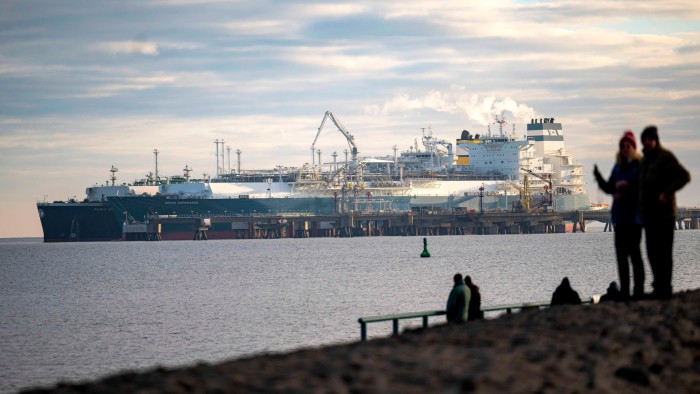Unlock the White House Watch newsletter for free
Your guide to what the 2024 US election means for Washington and the world
The writer is global research scholar at the Center on Global Energy Policy at Columbia University and former head of gas analysis at BP
As Donald Trump prepares to return to the White House, many aspects of the global gas market have changed dramatically since his first term. And the policies of his new administration will bring further change.
Just how much depends on the push and pull of a complex interplay of forces in this critical market. The US became the largest LNG exporter in 2023 and is expected to remain dominant. By 2030, the US will represent 24 per cent of the global LNG export capacity based on existing capacity and more under construction.
Another key change is that the EU imported about 50bn cubic metres of LNG more in 2023 than it did in 2020, bringing the total last year to about 130 bcm. In particular, the share of US production in EU LNG imports has doubled from 23 per cent in 2020 to about 47 per cent in 2023 as European countries sought to reduce reliance on supply from Russia after the invasion of Ukraine.
The actual level of imports dropped in 2024 amid weaker gas demand and higher storage levels. But there is likely to be a bounce back next year as the transit agreement ends between Russia and Ukraine for transmitting gas to the EU that is, remarkably, still functioning.
More US LNG will likely enter the market post-2030 as Trump will probably immediately reverse one of the most controversial decisions of Joe Biden’s administration on energy: the pause on US LNG export licences, and work to facilitate the approvals of liquefaction plants. How many US LNG projects actually move to final investment decision will be, however, a commercial decision based on the number of contracts signed and/or their ability to raise capital.
Trump will be keen to remind EU countries about his warnings regarding their dependency on Russian gas, especially Germany, a country that he lobbied to build an LNG import terminal. He could engage them in transactional terms to get EU buyers to sign more long-term contracts with US LNG exporters, something that only a handful of companies have done given the uncertainty on EU future gas demand in light of greenhouse gas emissions reduction targets. The European Commission’s president Ursula von der Leyen seems open to the idea.
At the same time though, some of Trump’s policy intentions point to a decline in US LNG exports to Europe. First, Trump’s plans to impose tariffs on goods imported into the US could hit European industry and growth. In turn, that would also reduce Europe’s energy consumption and impact its future needs of US gas.
Additionally, US oil and gas companies have been lobbying for the removal of penalties introduced by the Biden administration on leaks of methane during production. This could unfavourably impact US LNG’s environmental credentials among buyers. The EU recently passed a first-of-its-kind methane regulation that will require oil, gas and coal companies to monitor, report and verify methane emissions across the bloc. These rules will also apply to the importers of fossil fuels from 2025.
But some US players are actually keen to market relatively low emissions gas to Europe, so how this new regulation eventually hits US LNG will also depend on the details of its implementation.
One of the biggest uncertainties for the US-EU LNG relationship is what will happen with Ukraine and future exports of Russian gas. Trump has said he will end the war in one day, seeking a peace settlement deal. Given Trump’s past history of criticising Europe’s dependency on Russian gas, it does not seem likely that he would like more Russian gas to come back to the EU market. But a peace settlement could see a status quo with Russian pipeline gas continuing to flow to some European countries such as Austria, Hungary and Slovakia.
The second important question is whether Trump will continue the current administration’s sanctions on Vladimir Putin’s flagship gas project in the Arctic. Putin might want to include a lifting of those measures on the Arctic LNG 2 project as part of any peace settlement.
Finally, if there are more US LNG exports and a less supportive policy on clean energy, the resulting increase in demand for US gas could lead to a substantial increase in prices. But US consumers want gas to remain cheap, while expensive US LNG would not be able to win market share, particularly in price-sensitive Asian markets. A political calculation might be needed.
Read the full article here

